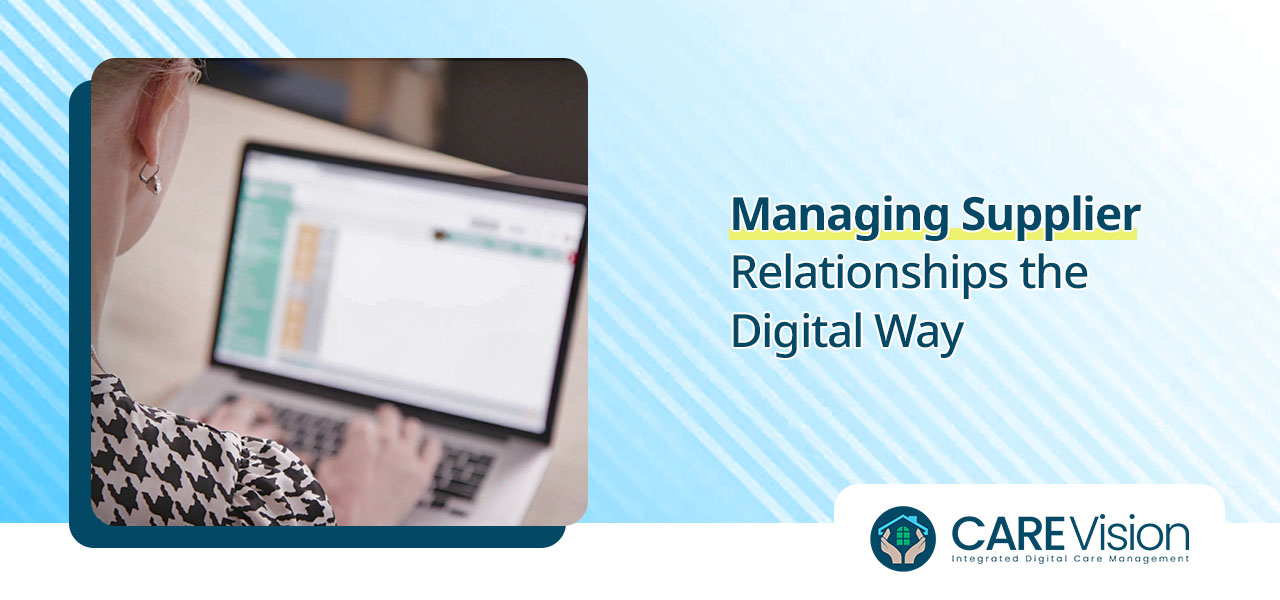Much of a care home manager’s job takes place behind the scenes. While the care provision and interacting with residents and their families is, of course a top priority, making sure that the resources that are needed to manage the daily running of the care home is equally vital After all, the setting couldn’t run properly without the people, equipment and supplies needed to ensure people’s safety, happiness and wellbeing are not in place.
Managing practical aspects such as procurement, logistics, maintenance, training and health and safety is made far easier when a care home uses digital software. This can help track activity, send reminders, allocate tasks and share information, all from one place and at any time of day or night. Remote access allows the people who need to see information to do so from wherever they are based, meaning that decisions can be made quickly and easily.
Managing budgets
Budgeting is a major component of any business plan and ongoing business management. Care Vision’s software allows this crucial function to be carried out digitally. Using digital budgeting tools means you can allocate funds to the right places to keep the care home running smoothly, as well as track expenditure and income and work out what you can afford to spend money on at any given time. Another advantage is being able to link budgeting information to your accounts package to create reports, tax returns and auditing updates when you need them.
Choosing suppliers
Often, choosing which service or resource to purchase takes a few steps to get right. There can be tendering processes to organise, for example, if the job is particularly specialist or large. Even for smaller jobs, it is best practice to obtain quotes and compare what is included to ensure the closest fit for your specific needs. Using digital software to manage these types of processes helps prevent confusion over which supplier is offering which price, plus it allows you to schedule in sales pitches, decision-making meetings and dates to receive goods or book in services. It also makes it more straightforward to compare prices and services.
Repairs and replacements
Wear and tear, malfunctions and accidental breakages of equipment are all part and parcel of maintaining a care home. Keeping on top of what needs to be done is essential to prevent a back-log of jobs and potentially unsafe facilities or equipment. Use Care Vision to schedule in repairs, manage invoices and payments and keep in touch with the people booked to do the work. This provides an accurate ‘paper trail’ of the job from start to finish in case of queries, as well as a record of what works have been done over the past year, or other chosen period of time. When it comes to handing over to a new care home manager, groundsperson or operations team, this information will be invaluable.
Infection control
Cleanliness and infection control is of paramount importance in a care setting, especially when it comes to looking after the medical and social healthcare needs for residents. There are stringent requirements around infection control measures that are backed up by law, so this is a key area to get right. Creating checklists and allocating tasks to staff digitally can help a busy care home keep on top of what is needed. This includes aspects such as purchasing cleaning supplies, replacing old equipment and keeping PPE well-maintained. Using digital tools for this purpose also provides clear written evidence to present to the CQC and any other relevant authorities around the actions taken to remain compliant, hygienic and safe.
Health and safety
Finally, health and safety encompasses a very wide remit when it comes to care settings. From how residents are looked after to how the kitchen is run to prevent accidents, this important aspect of running a business must be considered at every step. Staff must be kept up-to-date with the correct training and support, while procurement teams must take into account health and safety when choosing which items to buy, or services to use. A digital system can help care home managers identify training gaps, allocate dates for equipment checks, replacements or repairs and receive and act upon feedback from staff, residents and families around safety concerns or recommendations.






